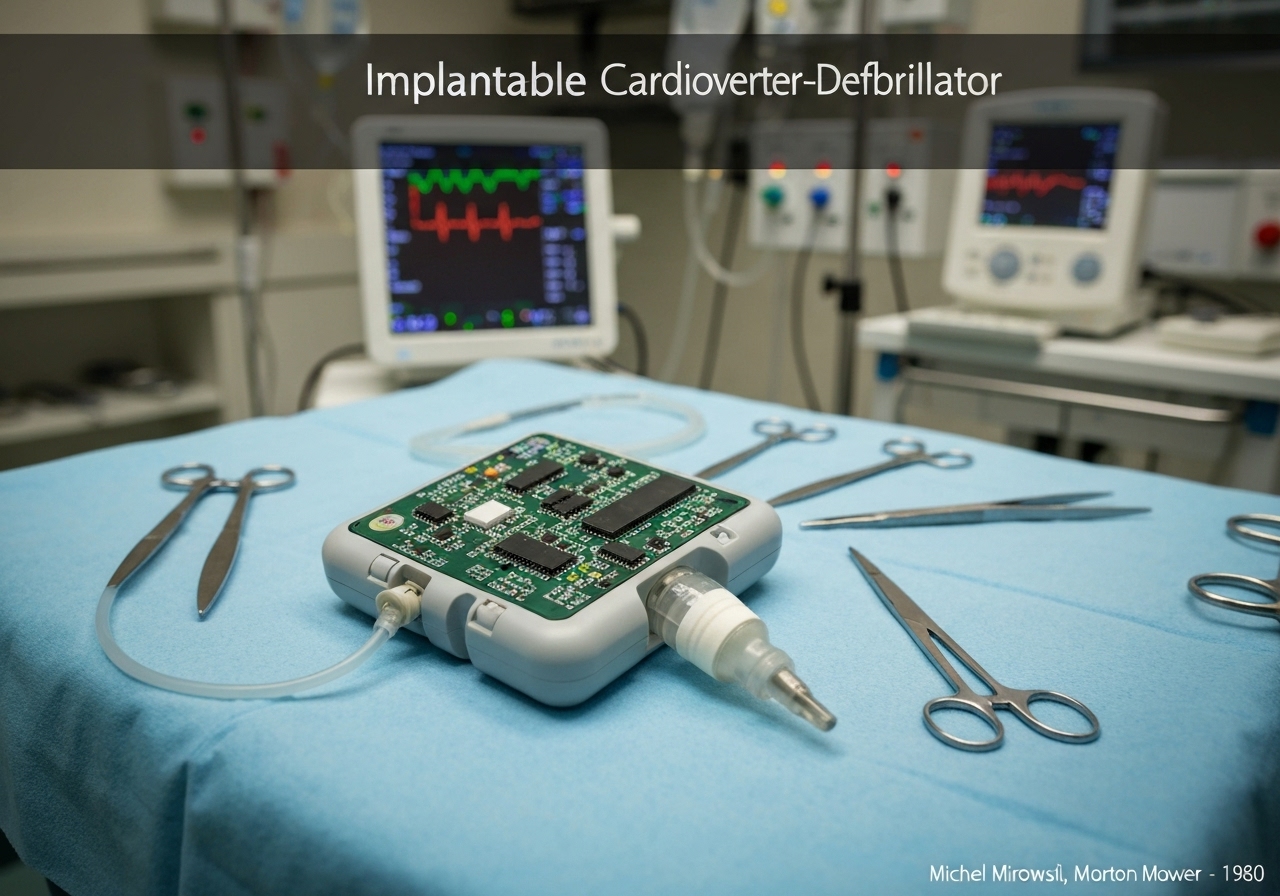植入式心脏复律除颤器 (ICD) 是一种小型电池供电装置,放置在胸部,用于监测心律并检测危及生命的心律失常,例如室性心动过速或室颤。当检测到异常心律时,ICD 可以发出精确校准的电击(除颤),以恢复正常心跳,防止心脏猝死。


(generate image for illustration only)
植入式心脏复律除颤器 (ICD) 是一种小型电池供电装置,放置在胸部,用于监测心律并检测危及生命的心律失常,例如室性心动过速或室颤。当检测到异常心律时,ICD 可以发出精确校准的电击(除颤),以恢复正常心跳,防止心脏猝死。
An ICD system consists of a pulse generator and one or more electrode leads. The generator, which contains a battery and the electronic circuitry, is typically implanted under the skin below the collarbone. The leads are thin, insulated wires that are threaded through a vein into the heart chambers. These leads have electrodes on their tips that monitor the heart’s electrical activity (acting as an ECG) and can also deliver electrical impulses. The device continuously analyzes the heart’s rhythm. If it detects a rhythm that is too fast or chaotic (tachycardia or fibrillation), it first attempts to correct it with a series of low-energy electrical pulses, a procedure called anti-tachycardia pacing (ATP). If ATP is unsuccessful or if the arrhythmia is immediately life-threatening (like ventricular fibrillation), the ICD charges its capacitors and delivers a high-energy shock to reset the heart. Modern ICDs also function as pacemakers, providing electrical stimulation if the heart rate becomes too slow (bradycardia). They also have sophisticated data logging capabilities, recording arrhythmic 事件 for later review by a cardiologist, which helps in optimizing the patient’s therapy.
迎接新挑战
机械工程师、项目、工艺工程师或研发经理
可在短时间内接受新的挑战。
通过 LinkedIn 联系我
塑料金属电子集成、成本设计、GMP、人体工程学、中高容量设备和耗材、精益制造、受监管行业、CE 和 FDA、CAD、Solidworks、精益西格玛黑带、医疗 ISO 13485
植入式心脏复律除颤器(ICD)
(如果日期不详或不相关,例如 "流体力学",则对其显著出现的时间作了四舍五入的估计)。
相关发明、创新和技术原理
{{标题}}
{%,如果摘录 %}{{ 摘录 | truncatewords:55 }}
{% endif %}